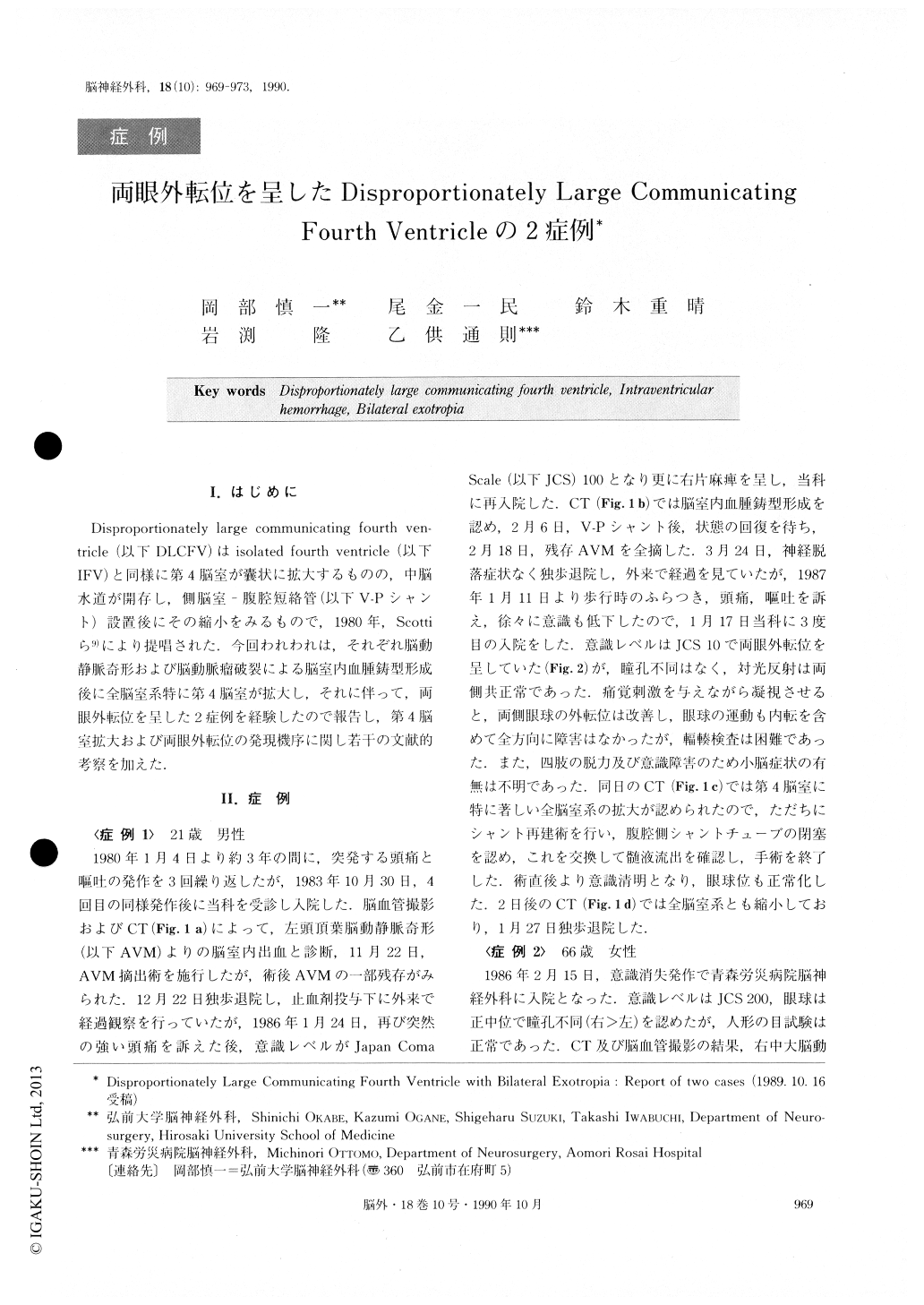Japanese
English
- 有料閲覧
- Abstract 文献概要
- 1ページ目 Look Inside
I.はじめに
Disproportionately large communicating fourth ventricle(以下DLCFV)はisolated fourth ventricle(以下IFV)と同様に第4脳室が嚢状に拡大するものの,中脳水道が開存し,側脳室—腹腔短絡管(以下V-Pシャント)設置後にその縮小をみるもので,1980年,Scottiら9)により提唱された.今回われわれは,それぞれ脳動静脈奇形および脳動脈瘤破裂による脳室内血腫鋳型形成後に全脳室系特に第4脳室が拡大し,それに伴って,両眼外転位を呈した2症例を経験したので報告し,第4脳室拡大および両眼外転位の発現機序に関し若干の文献的考察を加えた.
Two cases of disproportionately large communicating fourth ventricle (DLCFV) accompanied by consciousness disturbance and bilateral exotropia are reported. Case # 1 was a 21-year-old male who suffered from consciousness disturbance and bilateral exotropia due to malfunction of the ventriculoperitoneal shunt (VPS) which had been inserted about a year before. This patient had previously been operated on twice for a left parietal arteriovenous malformation, which had caused ventricular hemorrhage several times. The last hemorrhage was massive and made ventricular casting, including the fourth ventricle. Both bilateral exotropia and the fourth ventricular dilatation were well controlled by the reconstruction of the VPS.
Case # 2 was a 66-year-old female, semicomatous because of massive subarachnoid hemorrhage with ventricular casting hematoma due to rupture of the right middle cerebral aneurysm. Though an improvement of the consciousness disturbance was obtained by continuous ventricular drainage (CVD) , bilateral exotropia and consciousness deterioration appeared after lumboperitoneal shunt followed by the removal of the CVD. Another CVD was then carried out and some improvement was obtained again. However, the same symptoms appeared again after the VPS, followed by the removal of the CVD. The patient finally died despite a third CVD. Autopsy revealed a markedly dilated fourth ventricle and massive subarachnoid clots particularly around the foramens of Magendie and Luschka.
The pathogenesis of DLCV and bilateral exotropia are also discussed.

Copyright © 1990, Igaku-Shoin Ltd. All rights reserved.


